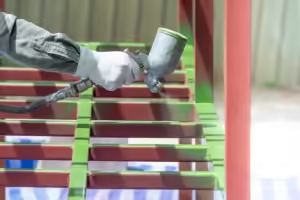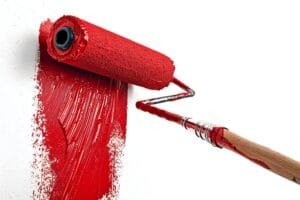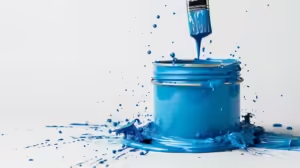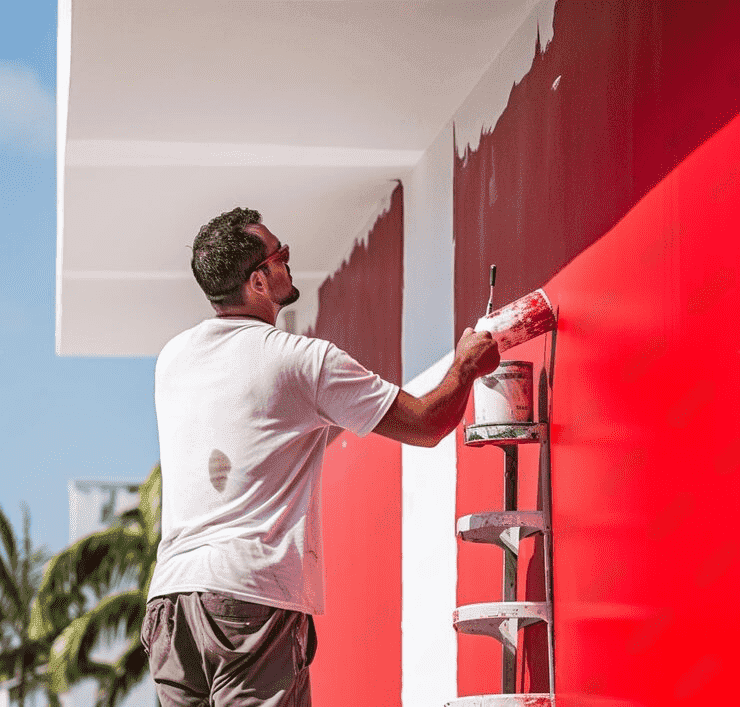Introduction to Paint Application Techniques
Mithila Paints Manufacturing has carved a distinguished place in the paint industry since its inception. Established in the early 1980s, the company was founded with the mission to provide high-quality and innovative painting solutions that cater to diverse customer needs. Over the years, Mithila Paints has demonstrated a steadfast commitment to excellence, not only in its product offerings but also in its business practices. This dedication to quality is reflected in their extensive range of paints, including decorative paints, industrial coatings, and eco-friendly options.
The significance of Mithila Paints lies in its ability to blend tradition with modernity. The company draws inspiration from the ancient art of Mithila painting, known for its intricate designs and vibrant colors, which resonates with local cultural heritage. This unique approach allows Mithila Paints to offer products that not only meet aesthetic preferences but also adhere to rigorous industry standards. The integration of artistic principles into paint production ensures that each product captures the essence of creativity, making it a favored choice among architects, decorators, and homeowners alike.
Innovation remains at the core of Mithila Paints’ operational philosophy. The company invests significantly in research and development, striving to introduce advanced formulations that enhance the performance of its paints. This includes improvements in durability, environmental friendliness, and ease of application. By focusing on technological advancements, Mithila Paints positions itself as a leader in the market, demonstrating a proactive approach to evolving customer expectations and industry trends.
In essence, Mithila Paints Manufacturing stands not just as a paint producer but as an advocate for quality, creativity, and sustainability in the paint industry. This foundational ethos sets the stage for exploring various paint application techniques that enhance the effectiveness of their products.
Understanding Paint Application Techniques
Paint application techniques are the methodologies used to apply paint to surfaces efficiently and effectively. Within the context of Mithila Paints Manufacturing, understanding these techniques is vital for ensuring high-quality finishes and optimal use of the products offered. The most common traditional methods include brushing and rolling, while modern advancements have introduced applications like spray painting.
Brushing is perhaps the most well-known painting technique, traditionally used for both interior and exterior applications. It involves using a brush to spread paint evenly over a surface. This method is particularly effective in reaching corners and intricate designs, making it suitable for detailed work and smaller areas. Rollers, on the other hand, are employed for larger, flat surfaces. Rollers enable faster coverage and are advantageous for achieving a smooth finish without visible brush strokes. Each of these traditional methods remains relevant in various projects, especially where precision and craftsmanship are required.
On the modern side, spray application has gained considerable popularity due to its efficiency and ability to cover large areas quickly. This technique uses a spraying device to atomize the paint and distribute it evenly across surfaces. Spray painting is particularly beneficial for achieving a professional finish on both smooth and textured surfaces. This method is frequently employed in industrial applications and can also be seen in artistic expressions typical of Mithila Paints, where vibrant colors and intricate designs often demand precise application techniques.
In the context of Mithila Paints, the integration of both traditional and modern techniques ensures that artisans can choose the most suitable method for their specific projects. By leveraging these paint application techniques, Mithila Paints not only upholds the richness of artistic traditions but also embraces innovative approaches that enhance the quality and aesthetic appeal of their products.
Traditional Brushes and Rollers: The Basics
In the realm of paint application, traditional brushes and rollers serve as the foundational tools utilized in Mithila Paints manufacturing. These tools are not only integral to the painting process but also significantly influence the final aesthetic and quality of the finished product. Selecting the right brush or roller can impact the application technique, texture, and overall effect of the paint on various surfaces.
Brushes come in a wide variety, with options including flat, angled, and round shapes, each designed for specific applications. Flat brushes are ideal for broad strokes and finishing edges, while angled brushes excel at cutting in along corners and detailed work. The bristle material also varies, with natural bristles suited for oil-based paints and synthetic bristles being preferable for water-based paints. The right choice of brush facilitates smooth application, contributing to an even coat that enhances the vibrancy of colors.
Rollers are another key player in traditional paint application, particularly useful for covering large surface areas efficiently. They come in various nap lengths, with shorter naps providing a smooth finish and longer naps allowing for a textured look. The choice of roller depends on the type of surface being painted and the desired finish. For instance, a high-nap roller can help achieve a stippled effect on textured walls, while a smoother nap roller is more suitable for flat surfaces.
When applying paint with brushes and rollers, it is essential to adhere to best practices. Proper loading of the brush or roller ensures an even application, and using consistent pressure while painting avoids streaks and uneven patches. Additionally, maintaining a wet edge during painting can prevent lap marks and enhance the overall finish. With these traditional tools and techniques, artisans at Mithila Paints can create beautiful, lasting finishes that showcase the quality and craftsmanship characteristic of their products.

Spray Painting: A Modern Technique
Spray painting is a prominent technique utilized at Mithila Paints, known for its efficiency and effectiveness in coating surfaces. The process employs specialized equipment that allows for an even application of paint, resulting in a smooth finish. At the core of this method is a spray gun, which atomizes the paint into fine particles, enabling it to cover large areas uniformly and quickly. Additionally, air compressors are often used to ensure a consistent flow of paint, while protective gear is worn by operators to maintain safety standards.
The spray painting process generally involves several key steps. Initially, the surface to be painted is meticulously prepared, ensuring it is clean and free from dust and debris. Next, the paint is selected based on the desired finish and durability, keeping in mind factors such as adhesion and drying time. Following paint selection, the operative calibrates the spray gun to the appropriate settings to achieve optimal atomization and coverage. The painting phase then commences, with the operative applying the paint in several thin layers to avoid drips and ensure a uniform appearance.
One of the primary advantages of spray painting over traditional methods, such as brush or roller application, lies in its speed and efficiency. Spray painting reduces labor costs significantly, as coverage can be completed in a fraction of the time. Furthermore, it is remarkable for reaching intricate details and large surfaces where conventional brushes may fall short. The technique also minimizes the potential for brush strokes, providing a more polished result. Various applications of spray painting include automotive coatings, industrial finishes, and artistic endeavors, each benefitting from the refined precision and prompt application this method delivers.

Surface Preparation: A Key Step in Application
Surface preparation is a critical phase in the paint application process, particularly within the context of Mithila Paints Manufacturing. Proper preparation ensures that the paint adheres effectively to the surface, promoting longevity and aesthetic appeal. The first step in this essential process is cleaning the surface thoroughly. This involves removing dirt, grease, dust, and any other contaminants that may impede the adherence of paint. A clean surface allows for even application and reduces the likelihood of peeling or flaking in the future.
Following cleaning, the next significant step is priming. Priming serves multiple purposes: it creates a suitable base for the paint, enhances adhesion, and can help to block stains that might affect the final appearance. Depending on the surface type — whether it’s wood, metal, or drywall — the choice of primer may vary. For instance, oil-based primers are often preferable for metal surfaces, while latex primers are ideal for wood and drywall. Priming not only ensures a smoother finish but also contributes to the durability of the paint job.
Additionally, patching is necessary if there are any imperfections, such as holes or cracks, on the surface. Employing an appropriate filler material, these irregularities must be addressed to create a smooth and uniform surface. Neglecting this step can lead to noticeable flaws after the paint application, thereby compromising the visual appeal of the finished product. Additionally, inadequate preparation can result in adhesion failure, leading to premature deterioration of the paint job.
In conclusion, the significance of thorough surface preparation cannot be overstated in the paint application process. Cleaning, priming, and patching are integral steps that significantly influence the quality and durability of the final painted surface. Proper execution of these steps ensures a successful paint application, ultimately enhancing the visual and functional qualities of the surface treated.
Layering Techniques for Depth and Texture
Layering techniques play a pivotal role in enhancing the depth and texture of paint applications, particularly within the context of Mithila Paints Manufacturing. Artists utilize various methods to build complex surfaces that are visually intriguing and rich in detail. Two prominent techniques employed are glazing and distressing, each offering distinct avenues for creative expression.
Glazing involves applying a translucent layer of paint over an opaque base, allowing the underlying colors to subtly influence the final appearance. This technique is particularly effective for creating luminous effects, where light seems to emanate from within the paint itself. At Mithila Paints, artisans often combine multiple glazes to achieve a desired hue, transforming the surface into a multidimensional canvas. The delicate interplay of colors not only enriches the visual experience but also adds a sense of depth that draws the viewer’s eye.
Conversely, distressing is a technique that embraces imperfection, adding character to the painted surface. This method involves intentionally weathering or aging the paint to create a sense of history and texture. By manipulating the paint to reveal layers beneath, craftsmen can evoke a rustic charm that resonates with both traditional and contemporary aesthetics. At Mithila Paints, the skilled application of distressing can transform a standard finish into a unique piece that tells a story.
The creative possibilities afforded by layering techniques are boundless. Artists can explore contrasting colors and textures, experiment with different materials, and discover novel methods to achieve their artistic vision. Whether through the ethereal glazing or the grounded approach of distressing, layering remains an essential practice for those working in the vibrant world of paint application at Mithila Paints. These techniques not only enhance the aesthetic quality of the artwork but also deepen the connection between the creator and the observer.

Safety and Environmental Considerations
At Mithila Paints Manufacturing, the safety of personnel and environmental sustainability are paramount throughout the paint application process. One of the primary measures taken to ensure worker safety is the mandatory use of personal protective equipment (PPE). Employees are provided with a comprehensive set of PPE, including gloves, masks, safety goggles, and protective clothing. This equipment is essential for minimizing exposure to harmful chemicals and ensuring that employees can perform their duties without the risk of injury or health issues.
In addition to PPE, Mithila Paints has implemented strict protocols for managing harmful fumes that may arise during the paint application process. This includes the use of advanced ventilation systems designed to minimize inhalation risks and control air quality within the manufacturing facility. Regular monitoring of air quality is conducted to ensure compliance with safety standards, further protecting both the workers and the surrounding community. By investing in these systems, Mithila Paints strives to create a safe working environment while actively reducing its ecological footprint.
Moreover, Mithila Paints emphasizes sustainable practices in its manufacturing processes. The organization is committed to utilizing eco-friendly materials and formulas that contain low levels of volatile organic compounds (VOCs). This not only aligns with global environmental standards but also enhances the safety of their products. By integrating sustainable practices, Mithila Paints mitigates adverse environmental impacts, promoting responsible resource use and waste management. These efforts extend to the entire paint application process, which is continuously evaluated for improvements in sustainability and efficiency.
Through the combination of robust safety protocols, the use of PPE, and the commitment to environmental stewardship, Mithila Paints Manufacturing not only protects its employees but also contributes positively to the surrounding ecosystem.
Quality Control Measures in Paint Application
At Mithila Paints Manufacturing, quality control is an essential aspect of the paint application process. The company employs various measures to ensure consistency and uphold the highest standards in paint quality. A combination of advanced technology, comprehensive staff training, and regular inspections plays a pivotal role in maintaining superior quality throughout the application process.
One of the primary methods employed in quality assurance is the use of automated systems and technology. State-of-the-art equipment is utilized to facilitate precise paint application, minimizing human error and maximizing efficiency. These automated systems are programmed to maintain specified parameters such as viscosity, temperature, and application thickness. By precisely controlling these variables, Mithila Paints ensures that the properties of the paint remain consistent across different batches, thus guaranteeing uniformity in product performance.
In addition to technological integration, the training of personnel is a fundamental component of quality control measures. Staff members at Mithila Paints undergo regular training sessions that encompass various aspects of paint application techniques, safety protocols, and meticulous inspection processes. This robust training program equips employees with the necessary skills to recognize and address any deviations from established quality standards during application. As a result, the likelihood of defects is significantly reduced, and the reliability of the final product is enhanced.
Furthermore, Mithila Paints implements a rigorous inspection schedule that includes both in-process and post-application assessments. These inspections are conducted by trained quality control professionals who meticulously examine the paint application for adherence to predetermined specifications. This practice not only ensures quality but also allows for the identification and rectification of any potential issues before the paint reaches the consumer.
Through these well-structured quality control measures, Mithila Paints maintains its commitment to delivering high-quality paint products to its customers, from the application stage to the final output.

Conclusion and Future Innovations in Paint Application
In conclusion, the exploration of various paint application techniques at Mithila Paints Manufacturing has demonstrated a remarkable journey through innovation and craftsmanship. From traditional methods that celebrate artistry to modern practices that emphasize efficiency and sustainability, Mithila Paints reflects a blend of heritage and forward-thinking. The commitment to enhancing the paint application process through research and development has positioned the company as a pioneer in the industry.
Looking ahead, several factors may shape the future of paint application techniques. One of the most significant trends is the increasing integration of technology. With advancements in digital tools and automated systems, the precision and efficiency of paint application are set to improve considerably. Innovations such as smart spraying technologies and the use of artificial intelligence in color matching will likely redefine the standards of paint application in manufacturing processes.
Furthermore, sustainability continues to be a driving force in the industry, pushing for eco-friendly paint solutions and application techniques that minimize waste. As consumer demand for environmentally responsible practices grows, Mithila Paints Manufacturing is expected to lead in developing sustainable products without compromising quality. The potential for renewable materials and water-based formulations is vast, promising a brighter, greener future for paint manufacturing.
As we contemplate the evolution of paint application, it is imperative for stakeholders within the industry to remain adaptable and open to emerging trends. Collaboration among artists, technicians, and scientists can foster innovative ideas that will enhance the overall experience of paint application. Mithila Paints stands at the forefront of this movement, steering towards a future that merges creativity with cutting-edge technology, ultimately enriching the fabric of the paint industry.

